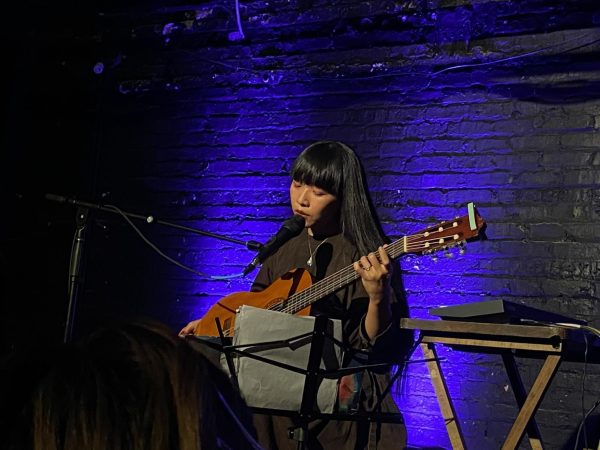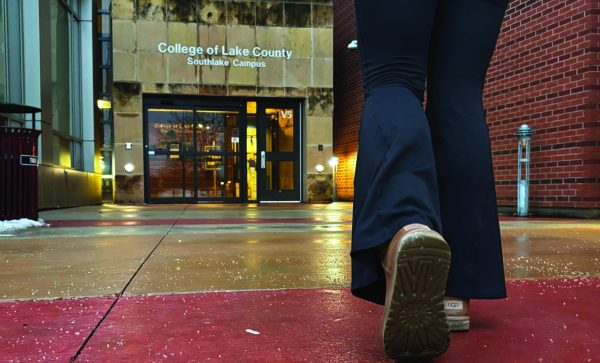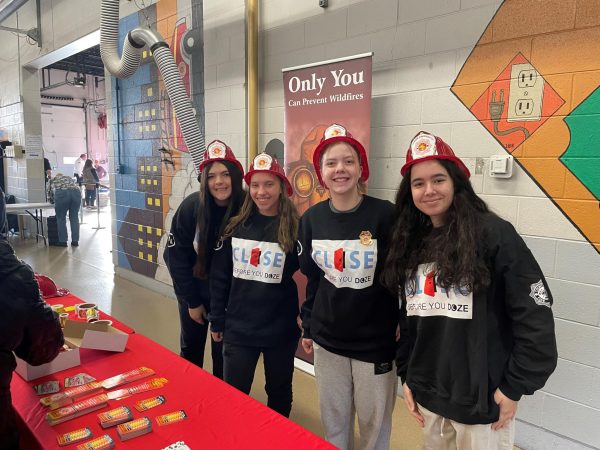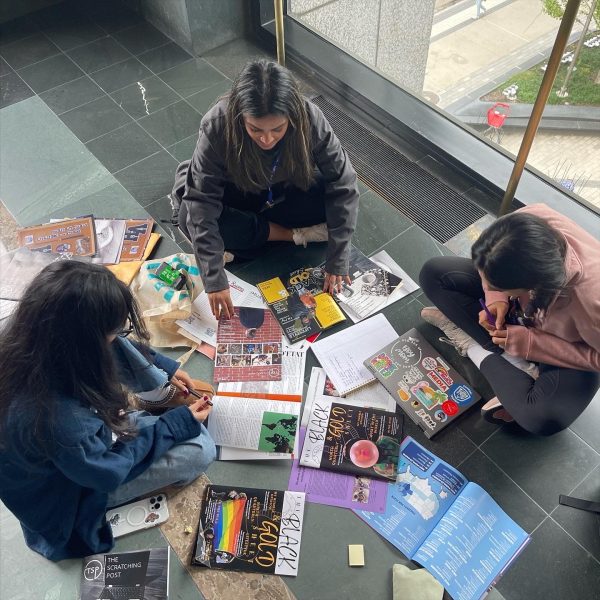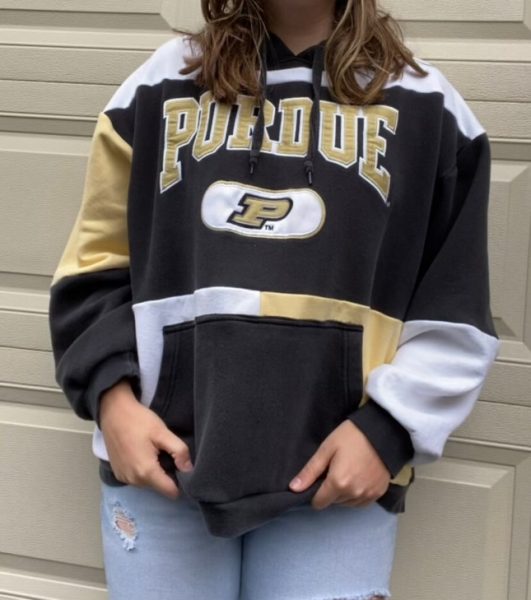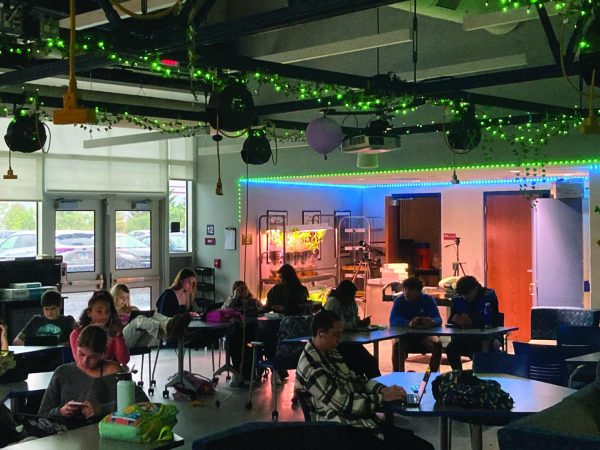Pop Culture Then vs. Now
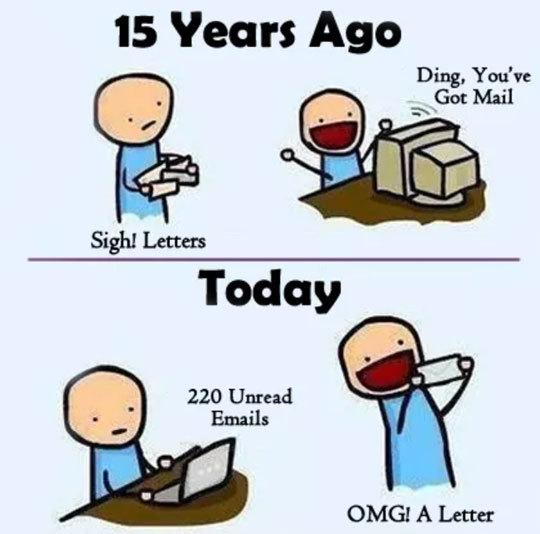
Whitney Houston to Nicki Minaj, Clueless to Mean Girls, typewriters to high-tech computers, and Friends to Grey’s Anatomy: All of these transitions indicate evolution in media and the pop culture that portray how our society has changed over the past few decades. From music to TV shows, all of these genres are impacted by how society has become much more advanced, but also much more explicit in what is fed to media. It all leads kids to turn to the past and adults to shun the present. Yet, these generations shouldn’t be so quick to dismiss pop culture’s evolution, and investigating differences between now and the past may help understand these differences in a whole new way.
Music
To most people’s opinion of today’s age, music has taken a turn for the worse, and many resort to listening to classics from the late 1900s to get a good fix. Yet, who can blame them? Earlier decades of music consisted of legends like Jimi Hendrix, Queen, The Beatles, Bon Jovi, Freddie Mercury, and much more. People who render today’s music worse may use examples like “Anaconda” by Nicki Minaj or “i hate u, i love u” by Gnash. On the other hand, some people shouldn’t be so quick to dismiss today’s music. Artists like Adele, Bruno Mars –who may even be a modern Michael Jackson– and John Legend-just to name a few-certainly portray raw talent and stun their audiences without solely singing about drugs. Yet what makes music from today so different from the past?
“In the late 1900s, music was about expressing your true feelings, politically correct or not, through music and celebrating everyone’s opinions. Now, music is about creating lyrics and instrumentals to please the common audience, not about expressing the things you really care about through music,” said Nicole Mischiara (12).
Movies
Movies have evolved enormously over the past couple decades. Effects, length, content, and quality are some of the major differences in movies now compared to the 1960s, according to Recomparison. Two major differences stick out between movies then and now: graphics and content.
“A major difference between older movies and movies made today is definitely the special effects, and even the soundtrack. Jaws is an example of an old film with amazing sound effects,” said Autumn Matuch (10).
Since Hollywood has greatly advanced in computer digitization and programming, the usage of the green screen has become much more high-tech. Action movies, as well as dramas and any other genre, can be emphasized with a wide array of special effects. Dr. Strange (2016) and Rogue One: A Stars War Story (2016) emphasize the world of action-packed movies that involve complex graphics.
“Older movies often used real wartime footage for explosion scenes, or they just used sounds and smaller physical explosions. Today, many movies rely on technology to create the many effects that can often seem a little too overdone to the point where I feel like I’m watching someone play a videogame, and not watching a movie,” says Matuch.
In terms of content, movies have lost their “classic” touch, and many are created for mere mindless entertainment. Classic movies are relied on culture and and some intense plot to appeal the audience. On the other hand, many movies of today’s age also express powerful messages that mirror important modern issues. In past decades, movies such as Clueless (1995) may be seen as “cheesy.” Nevertheless, it set the precedent for chick flicks like Mean Girls (2004).
Older movies were also more raw in the sense that whatever genre the movie was, whether it was Audrey Hepburn in Breakfast at Tiffany’s (1961) or Matthew Broderick in Ferris Bueller’s Day Off (1986), they were more original and were the first to convey different messages in just a few hours of visual entertainment.
“Around the time the 80s began, movies seemed to take on a more comedic role, made more for enlightenment rather than a taste of drama. The dramas made in the 80s often had a touch of comedy that made the settings seem more real and relatable,” says Matuch.
News, Internet, Social Media, and Technology
Past news outlets to today’s news have widely changed as result of the evolution of technology. Computers only became the norm in the late 80s and up until that point, mass communication through technology was relatively nonexistent. As the digital age advanced, the abilities of computers and phones in the last 30 years or so, the internet rapidly increased in speed and availability. Social media not only began dominating the personal aspect of lives, but also news outlets. Nowadays, this rapid popularity of social media and obtaining information from the internet has created a whole new spectrum of the information found– this revolutionary change could be for the better and for the worse.
“I think it [communication over the internet] can be overwhelming and therefore people shut things out. I think also because there is such a high volume, it’s easy to mistake volume for quality,” said social studies teacher Mr. Paul Friedrich, “Something like seven or eight media companies own like 80 percent of the media in the world, and the truth is there’s not that many voices producing what we hear. So that we have a lot of it doesn’t mean we have very diverse perspectives in it.”
The presence of the internet and subsequently, its power, is ubiquitous. In terms of how this affects news stems from other factors such as politics, social media, and the demographic these outlets reach online. Nowadays, important foreign subjects being broadcasted on the news use quotes from Twitter as one of their main sources of support, and this has also changed the nature of many news stations to become more biased.
“News has co-evolved with social media- where social media becomes a place for people to share opinions, but then it also becomes a place for people to bark from their bubbles. So because people share opinions over a lot of social media, whether it be Facebook or Twitter, I think there has evolved a lot of the news outlets to feed that market who’s looking for opinion-based stuff,” said Friedrich.
The youth demographic has largely been impacted by this evolution of news and the internet; social media plays such an important role in kid’s lives, there has become a mutual relationship between both what they see and what is put out for them to see.
“I think that the combination of the mediums that we use to contact the news and the ways in which we share news, echo news, and share news and opinions on social media have served to mold a lot of the newer news outlets and also to the newer entertainment outlets,” said Friedrich.
This rise in social media has exposed more youth to the news, but in turn, the quantity and quality of content that is put out on social media has changed as well. Channels on Youtube like Clevernews and companies like Buzzfeed spend more time broadcasting news about the Kylie Jenner’s snapchat, celebrity couple sightings, and other topics that pertain to youth culture.
TV Shows
Similar to movies, visual entertainment on the screen has varied a lot between just a few decades ago and now. 90’s kids and even 2000’s kids grew up watching shows like Full House, Friends, Life with Derek, and That’s so Raven, while channels like the “new” Disney Channel that everyone is familiar with nowadays disgraces shows of the past, but serves to entertain kids now. These shows include K.C, Undercover, Bunk’D, and Best Friends Whenever (which I had to look up because it pains me to even turn Disney Channel on anymore). So why have TV shows changed so drastically?
“TV shows today are more likely to push boundaries that they wouldn’t have pushed before. For example, Friends was really popular when I was in middle school and high school with its original episodes, and I can clearly remember the first time a swear word was used in Friends (and not like a severe four-letter swear word, but a word like damn),” said English teacher Mrs. Tara Young. “That was really edgy for a TV show, like public TV, to be using a word like that. There was a lot of controversy over the use of the language, and today you turn on TV shows and it’s like nothing. It’s a very common place to use more explicit language or talk about more explicit content,” says Young.
One of the major differences between TV shows then versus now is that TV shows today cover topics that are much more widespread to fit the way society has evolved. As society has become more accepting of same-sex marriage, interracial families, and other past controversial topics, TV shows have become more “inclusive” to fit those images. Going back to Disney Channel, Good Luck Charlie was the first show on that channel to debut a same-sex couple on Disney.
In turn, this inclusive nature has also led TV shows to exaggerate many aspects of today’s culture too. Shows like Gossip Girl portray sides to high school like drinking and fashion that are completely unrealistic, but mold some people into thinking that they are.
Another aspect of modern TV shows that is radically different from the past is the tendency to “try too hard.” In the past, all the originals like Full House, Life with Raymond, Leave it to Beaver, The Cosby Show, and one of my personal favorites, Gilmore Girls, had scripts that were timeless simply because kept originality and old-time humor.
In today’s TV world, the structure has become mildly more corporate and the natural, old-time aspect of dialogue and plots is lost. Many older shows were unique and classic, but some TV channels these days only create TV shows that to build a brand or get more money. Now, that’s not to say that all shows nowadays are worse. Modern TV shows have better features to them that old ones don’t have; for example, shows like Game of Thrones, The Walking Dead, 13 Reasons Why, –another one of my personal favorites– One Tree Hill, and Pretty Little Liars are both hard-hitting and entertaining.
“Our society is overall more accepting of different family structures or different mindsets outside of the normal narrative- like the mainstream narrative of what an American should look like. I feel like we’re breaking the mold, so that’s why some TV shows are pushing boundaries a little bit,” said Young.
Young establishes a reason for why shows have evolved to the way they have; society has just become more accepting of different social factors, and as they gradually began reflecting that to fit today’s culture, an increasing amount of shows are “pushing boundaries” with their content. Shows like The Bachelor and Orange is the New Black are examples of modern TV shows that are much more explicit than shows from the 80’s or 90’s. Although, again, that isn’t saying that all shows were radically different back then because of society’s less explicit culture. That 70’s show and shows on MTV like The Real World and Jersey Shore pertained to this pushing of boundaries, but “were not mainstream TV,” Young mentions.
“I think Real World was one of the first reality TV shows that really addressed some of these more controversial issues,” said Young.
Although there is an issue with media glorifying certain actions and habits in the lives of young people, the nature of TV shows is evolving in an interesting way and creating some interesting shows with it.
There are many aspects in pop culture and media that highlight differences between what existed then versus what exists now. Some may say it is mere evolution that is responsible for this, but many differences are due to specific plausible factors. Overall, I think our generation is lucky to be able to witness both eras of media and hope to see what the future has in store!


